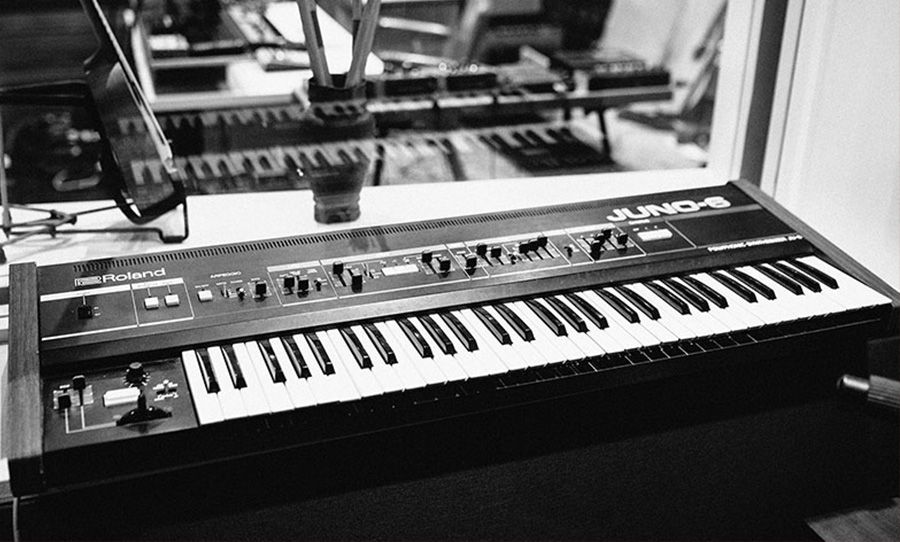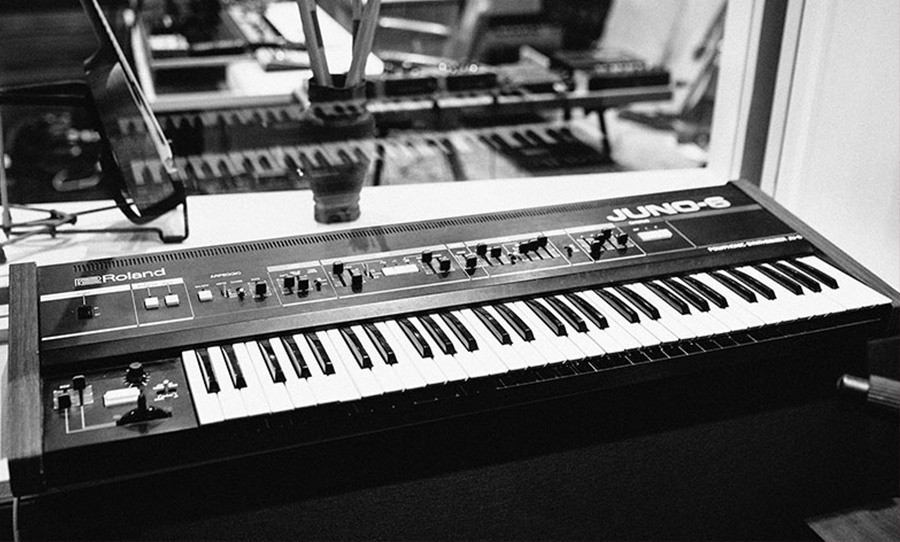A reflection on the legacy of the Roland Juno-6 and the enduring virtue of a simple, yet meticulously crafted synthesiser.
For many musicians in the 80s, the Roland Juno-6 was their introduction to the synthesiser and a sound that would explode throughout the decade and beyond, helping to define an era in music history that is revered and increasingly revisited today.
The Juno-6 was released in 1982 as one of the first widely-available mass-market synthesisers, allowing a generation of sound makers to get their hands on an instrument that would go on to permeate music in a way few might have predicted; one that was used by a diverse spread of artists ranging from 80s synth heroes like Duran Duran to modern psychedelic explorers like Animal Collective.

The Juno-6 may have been replaced by the more famous Juno-60 a few months after its release, but aside from a difference in memory size, they are almost identical. It doesn’t have to bow down to its more renowned sibling, in fact, it’s strength is in its simplicity – a 6 voice polyphonic synthesiser, stable and with a distinctly deep, rich sound (made all the more vibrant with a lathering of that signature Roland chorus).
Part of the Juno appeal is in its tactile interface – what you see is what you get – that is certainly not to be underestimated. Thick pads and soaring leads are the product of a relatively simple set of controls. With fewer bells and whistles than earlier synths released by Roland (such as the Jupiter-8), the Juno-6 relies on two waveforms paired with a unique filter section and a single oscillator per voice.
One of the traits of the Juno line that to this day makes it such a desired synth is its perpetual ‘sweet spot’ – simply put, it always sounds good. In fact, Enya’s 1991 hit Caribbean Blue famously features a relatively untweaked preset straight out of the Juno handbook. Producers and musicians alike sought after that ease of use that the Juno brings to the table. Its instant musicality is a hook for producers across a plethora of genres, making it a staple in studios everywhere.
Roland had achieved something with the release of the Juno that no company had managed to pull off – they brought the polyphonic synth to the masses. Even at a time when digital synths were becoming more and more popular, the Juno maintained an identity as a trustworthy instrument, and unlike some of the other analog synths on the market, you could be in tune and dial in a great sound straight away.
By the time the next in line to the throne, the Juno-60 was introduced, Roland had lost some of its dominance in the affordable synth market, with companies such as Korg keen to claim their share of the pie.
The Juno-60 was introduced less than a year after the release of its predecessor to bring external control and programmability to the Roland line. But it was the Juno-6 that began the legacy that spawned successive models in this family of synths, always challenging the competition in price and practicality, in what became an increasingly saturated market.
The sound of the Juno line has been modelled for use in various software incarnations, but nothing can quite contend with the warmth of the hardware synth. These days, used prices for the Juno-6 and others in the Juno line are steadily increasing, a testament to its iconic status as well as the prevailing desire for analog warmth in a digital world. A truly timeless piece in an iconic family of instruments, it’s safe to say that they don’t quite make synths like this anymore.



